In a home that uses oil heat, it’s important to know when you’re running low on oil so that you can order. Even if you pay the premium pricing for automatic delivery, you should still check to see how many gallons of heating oil are in your tank. To keep track of this, your tank should come with a tank gauge of some sort. Regardless if it’s the Smart Oil Gauge or a standard float gauge, we’ll help you understand how to read your gauge to ensure that you’re on top of how much heating oil you have in your tank.
How to Read a Float Gauge
Most fuel tanks will often come with a traditional float gauge. This float gauge comes equipped with a metal arm that has a bobber on the end. These bobbers are usually made of cork, but recently plastic ones have been growing in popularity. On the top of this gauge, in particular, you will see a plastic cylinder and disc combination. The little disc moves up and down depending on where the bobber sits in the tank. The plastic cylinder has markings on it that will give you an estimated reading based on where the disc sits in the cylinder.
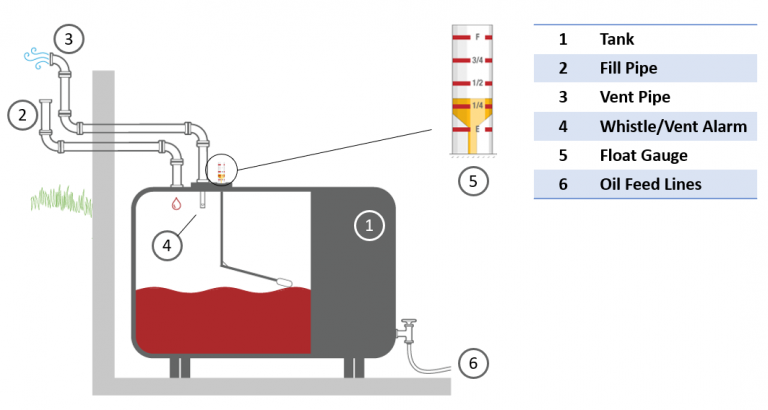
You can read a float gauge by looking at the vial’s tick marks. You can typically indicate the oil level by Full, 3/4, 1/2, and 1/4 markings. Because the heating oil tank is rounded on the top and bottom, these gauges tend to not be very accurate. This is because they cannot account for the curvature of the tank and you will often be reading less oil than you have. You should order oil as soon as the float gauge reads 1/4 tank. This will be enough to hold you over until your next delivery arrives.
These gauges will only provide an estimate of how many gallons are actually in the tank. Due to this, we recommend that you multiply the level shown by your float gauge by the gallon maximum in your tank. For example, if a 275-gallon tank had a float gauge reading at 1/4, you would multiply .25 * 275 = 69 gallons. For a 330-gallon tank, you would multiply .25 * 330 =82.5.
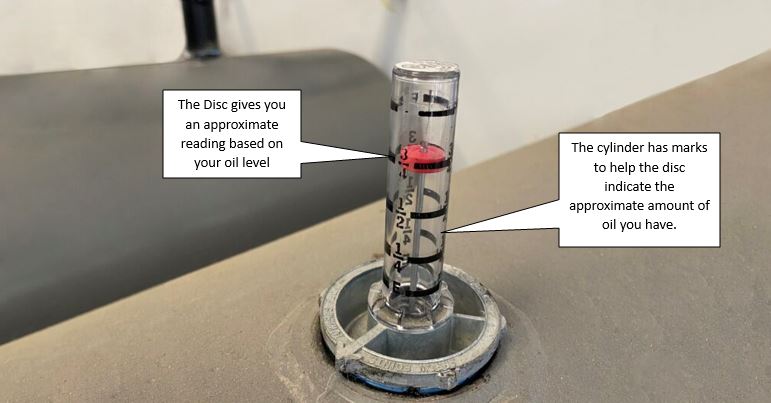
Is your Float Gauge Accurate?
Because these gauges only give approximate readings, they can only be used to give you an idea of how many gallons of oil are actually in your tank. Additionally, due to all the moving parts on the sensor, it is prone to wear and tear over time. If you have suspicions that your float gauge is stuck, then simply unscrew the plastic vial using your hands. Then, gently push down on the disk and if it moves down, then the gauge isn’t stuck. The gauge’s arm will then float back to the top of the oil, giving you the estimation.
One of the most common ways that a float gauge gets stuck is by simply rotating inside the tank itself. This can happen gradually over time and as a result of this, the float can get wedged against the side of the tank, preventing it from moving.
Float gauges will tend to get less buoyant over time. This is often due to a build-up of sludge that can hold down the gauge, preventing it from floating on top of the oil level’s surface.
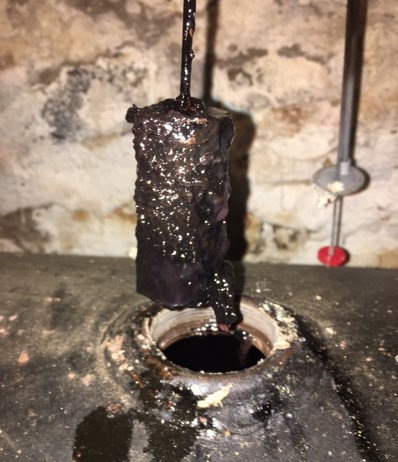
How Much Heating Should I order and when?
After knowing how much oil is currently in your tank, you’ll have to figure out how much you’ll want to order. Using the below graph, you can determine how much oil you can fit in your tank. Use the below equation to figure out what the ideal number of gallons to order will be.
The Tank’s Capacity – Current Oil Level = The Amount you’ll need to order
For a standard 275-gallon oil tank, the maximum capacity for your tank is normally around 250 gallons. This is because dealers will leave the top few inches of the tank clear to prevent overflow and overflow. The same applies to 330-gallon tanks, but they’ll normally have around 315 gallons of oil as their true capacity. If your 275-gallon oil tank is 1/4 full, then we’ll use the equation shown above, 275 – 206 = approximately 69 gallons.
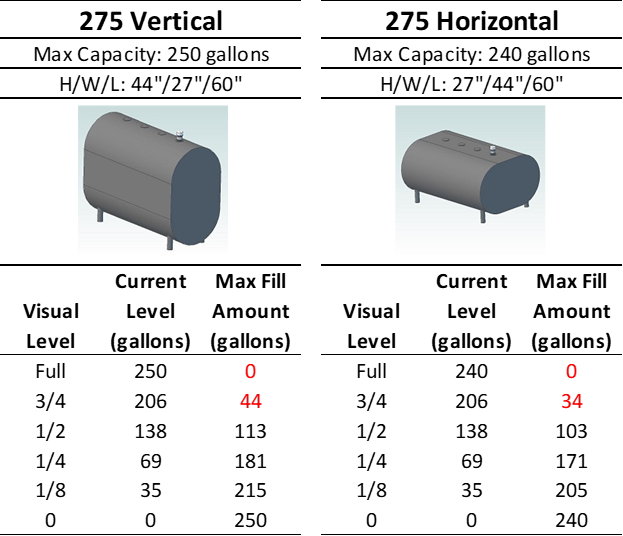
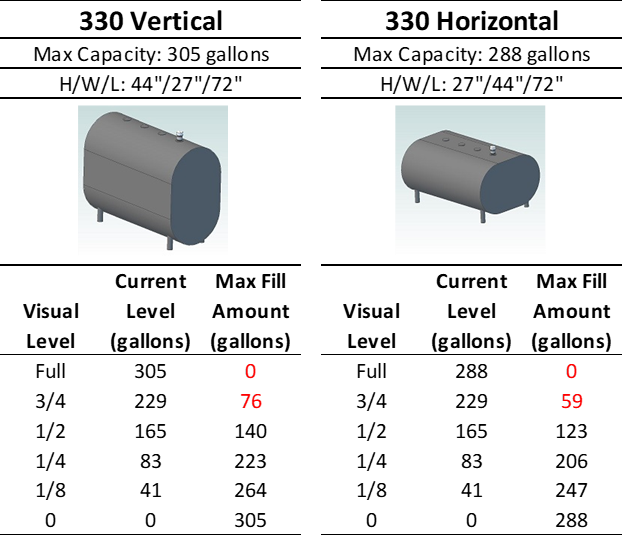
With the above guides that we’ve provided you with, you’ll be able to determine when you should order heating oil. You can find the best prices available to you on our FuelSnap Website! This will help you prevent overcharging from local dealers!
How to Read a Smart Oil Gauge
Another type of gauge that you can use to monitor your heating oil level is the Smart Oil Gauge. This gauge is a remote WIFI gauge that you connect to your WIFI and install onto the top of your tank. This gauge will send an ultrasonic signal down to your oil level that will then bounce off of the oil level and go right back up to the sensor. By using the Smart Oil gauge app, you’ll be able to tell how much oil is in your tank. That will tell you when you’ll need to fill up next.
It will be able to account for your tank’s curvature as well. This will allow you to get accurate date readings on your oil level! We can configure the Smart Oil Gauge to a variety of different tank sizes and shapes. Additionally, the gauge will give you weekly status readings for “Gallons per Day”, “Days Until 1/4” and “Days Until 1/8”. You can even order heating oil through the app! The Smart Oil Gauge app has direct integration with FuelSnap, which gives you access to local prices, anytime and anywhere!
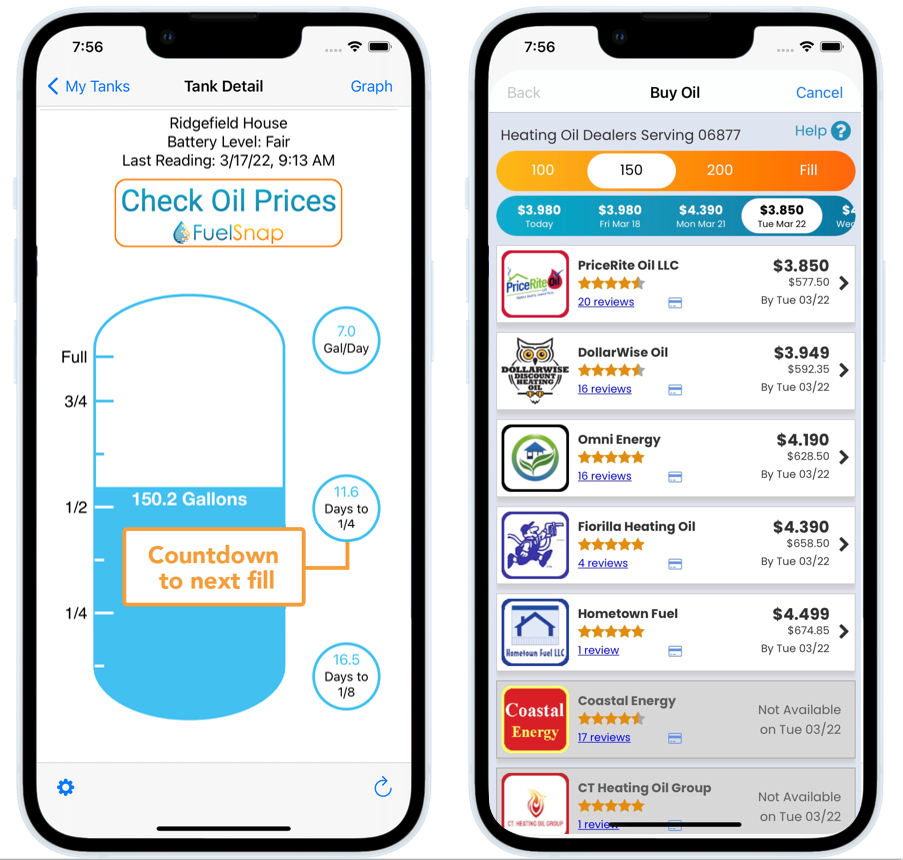
Keeping Track of Heating Oil Usage
Another handy feature with the smart oil gauge, is that it keeps track of your oil usage. The Smart Oil Gauge will be able to tell you how many gallons you are burning on average, per day. However, your usage will be different than your neighbors and friends. It’s all dependent on what you use heating oil for, and the size of your house.
If you use it for heat and hot water, then your usage will be higher than someone who uses it for one or the other. The size of your home will also change your usage data. Larger homes will often burn more oil than smaller houses. This is because your boiler has to work harder to push the heat throughout your home. Your usage will often be lower during the summer months than in the winter months. The warmer weather will often incentivize you to use less oil. During the winter months, you will be burning a lot of oil and will need to get a fill frequently.
The Smart Oil Gauge will give you exact readings on your heating oil usage per day. It will let you know what your heating oil usage was on a specific day.
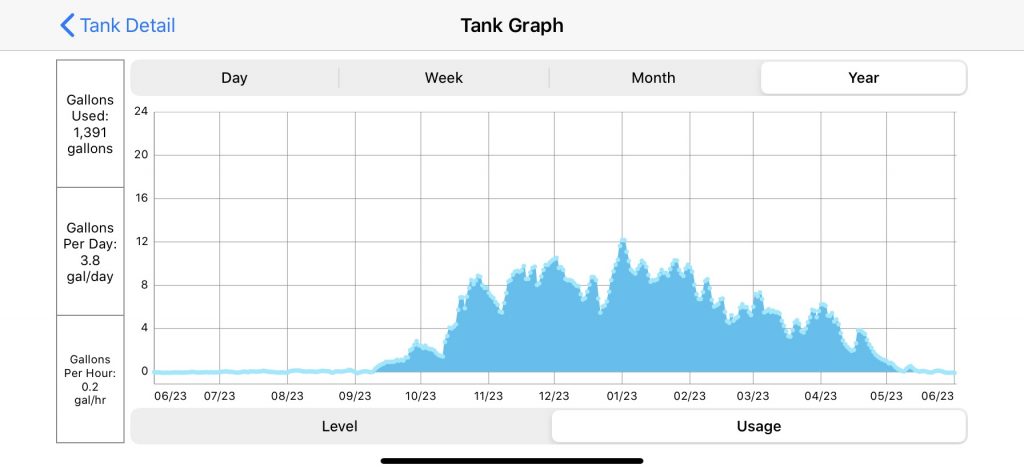
Using the Float Gauge and Smart Oil Gauges
Now that you understand how to read a float gauge and the Smart Oil Gauge, you’ll know which one is best for you! You can even use both gauges in conjunction with each other! Being able to use both gauges at the same time will give you the best data possible from your tank. While you don’t have to use both, it is beneficial to do so.
If you don’t wish to use both at the same time, that’s perfectly fine! You can use one or the other and use a yardstick to measure the oil level to get an accurate reading. Make sure to plug that information into an Oil Tank Calculator to ensure your information is correct.
Happy Heating,
Hunter



